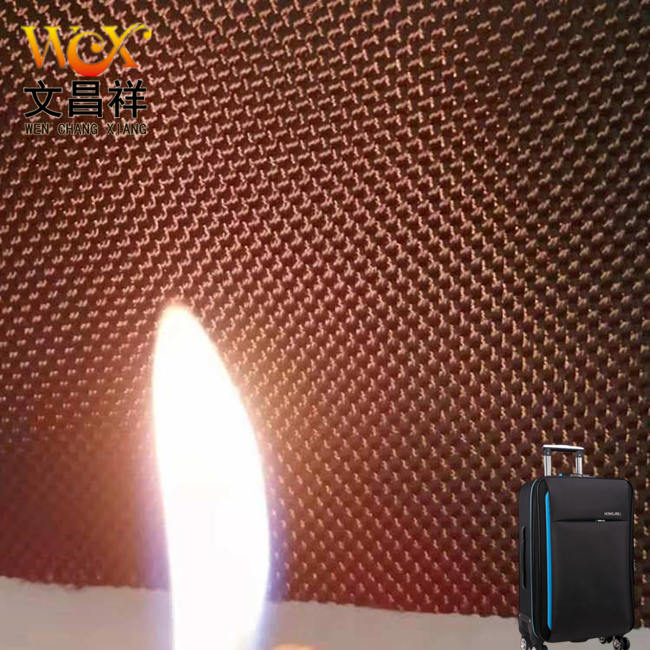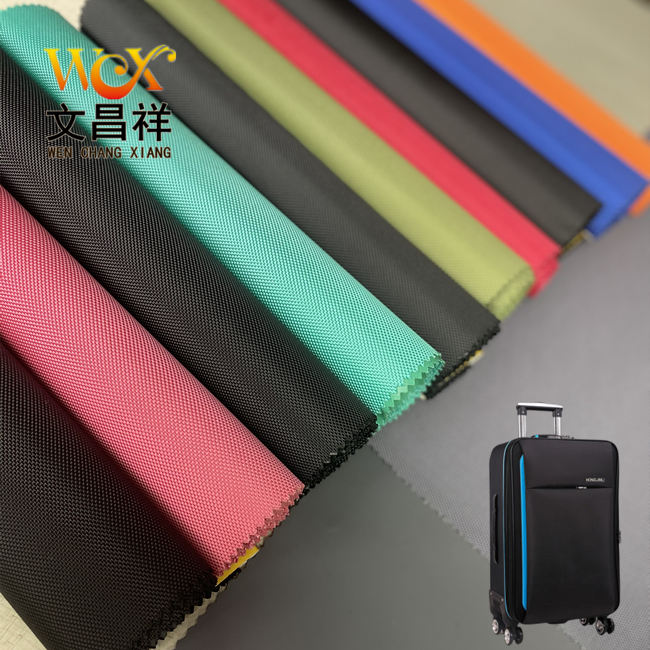Fire-retardant fabric is to use technology to perform fire-retardant treatment on the basis of colored fabrics, or to polymerize and blend fire-retardant agents with fire-retardant functions through polymers , copolymerization, lamination spinning, joint extrusion modification and other technologies are added to the fiber to make the fiber fire-resistant. The post-finished product can effectively prevent the spread of flames and protect the original properties of the fabric. It can automatically extinguish or effectively slow down the spread of flames and carbonize the fabric to form an isolation layer. It also has the properties of not melting or dripping or delaying flames when exposed to fire. Characteristics, with better fire protection effect. (Fire-retardant fabrics are not inflammable. Even if they are ignited by an open flame, they will automatically extinguish within 12 seconds after leaving the open flame)

Fire-retardant fabrics can be divided into:
p>
1. Permanent fire-proof fabric (woven with fire-proof fiber, no matter how many times it is put into water, the fire-proof effect does not change)
2. Washing resistance (more than 50 times) ) Fire-retardant fabric
3. Semi-washable fire-retardant fabric
4. Disposable fire-retardant fabric (decoration, curtains, cushions, etc.)
The production process of fireproof cloth and the introduction method of additives can be divided into: fireproof treatment of fibers and fireproof finishing of fabrics
Fireproof treatment of fibers:
1. Fireproofing The mechanism refers to adding a certain fire retardant to some inherently flammable raw fibers (such as polyester, cotton, polyacrylonitrile fiber) to inhibit free radicals during the combustion process; or to change the thermal decomposition process of the fiber to promote dehydration and carbonization. ; In some cases, the fire retardant decomposes and releases non-combustible gas to cover the surface of the fiber, thereby isolating the air.
2. Fireproofing treatment methods
1) Improve the thermal stability of fiber-forming polymers
2) Fireproof modification of raw filaments
Fireproof finishing of fabrics:
1. Fireproofing mechanism
1) Covering layer theory: Fire retardant can form a glassy or stable foam covering layer at high temperature, which has the function of heat insulation , isolate oxygen, block flammable gases from escaping outward, and play a fire prevention role.
2) Non-combustible gas theory: The fire retardant decomposes into non-combustible gas when heated, and the concentration of combustible gas decomposed from cellulose is diluted below the lower combustion limit.
3) Endothermic theory: Fire retardant reacts endothermically at high temperatures, lowering the temperature to prevent the spread of combustion. In addition, the heat can be transferred out quickly after fabric finishing, so that the cellulose cannot reach the temperature of ignition and combustion.
4) Chemical reaction theory (catalytic dehydration theory): The fire retardant acts as a Lewis acid and reacts with the fibers at high temperatures, causing the fibers to catalytically dehydrate and carbonize, reducing the generation of flammable gases.
2. Fireproofing finishing method
1) Padding and baking method: a widely used fireproofing finishing process. The process flow is padding-prebaking-baking-post-processing. Padding fluid is generally composed of fire retardants, catalysts, resins, wetting agents and softeners, and is configured into an aqueous solution or emulsion for post-finishing.
2) Dip and bake method (absorption method): The structure is immersed in the fire-proof liquid for a certain period of time, and then dried and baked to make the fire-proof liquid absorbed by the fiber polymer.
3) Organic solvent method: It uses a non-water-soluble fire retardant agent. Its advantage is low energy consumption during fire prevention finishing. However, in actual operation, attention should be paid to the toxicity and flammability of solvents.
4) Coating method: Mix the fire retardant into the resin, and the fire retardant is fixed on the fabric through the adhesion of the resin. According to different mechanical equipment, it is divided into blade coating method and pouring coating method.
3. The finishing process and commonly used additives of fire-proof cloth
The current mainstream fire-proofing processes include the prolufen ammonia fumigation process and CP finishing process. The Prubenzin process is suitable for formaldehyde that is not suitable for work clothes that are not close-fitting. The advantage is that the loss of breaking strength of the fabric is small. The relative fastness of fabrics made from the same natural cotton fabric after finishing is much higher. Generally, Luben can basically meet the requirements of GB8965.1-2009 Class B standard, while CP can only meet the Class C standard of this standard, and it is basically difficult to achieve Class B standard. However, for fire-retardant clothing that is close to the skin, it is not recommended to use fabrics with proben finishing technology. Instead, it is recommended to use CP technology with low formaldehyde content or permanent fire-retardant fabrics such as acrylonitrile and Nomex. For customers with higher requirements for color and feel, it is also recommended to use fire-retardant fabrics made with CP technology or acrylonitrile and Nomex. At present, most customers still use fire-retardant work clothes made of fire-retardant fabrics made of polybenzene technology and finishing.
Process flow:
Pluben: padding fireproof finishing liquid → pre-baking → ammonia fumigation → washing → drying → pre-shrinking → finished product (requires hot air priming machine and Ammonia fumigation machine)
CP: padding fireproof finishing liquid → pre-baking → baking → washing → drying → pre-shrinking → finished product (general dyeing factories can do this)
Commonly used additives:
According to the application method, they are divided into additive fire retardants and reactive fire retardants. According to the composition, additive fire retardants mainly include inorganic fire retardants, halogen fire retardants (organic chlorides and organic bromine compounds), phosphorus fire retardants (red phosphorus, phosphate esters and halophosphates, etc.) and nitrogen fire retardants, etc.

Oxford cloth and environmentally friendly recycled series specifications and classifications: 1680D Oxford cloth, 1200D Oxford cloth, 900D Oxford cloth, 600D Oxford cloth, 420D Oxford cloth, 300D Oxford cloth, 210D Oxford cloth, 150D Oxford cloth, etc.; classified by function: flame retardant Oxford cloth, waterproof flame retardant cloth, silver-coated flame retardant cloth, pu waterproof Oxford cloth, PVC Oxford cloth, TPE, TPU, anti-UV, camouflage Oxford cloth, fluorescent Oxford cloth, compound cloth, etc. Please consult customer service for details
</p







